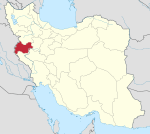Sarpol-e Zahab
Sarpol-e Zahab (Persian: سرپل ذهاب, Sarpole Zahâb; Kurdish: Serpêllî Zehaw, سەرپێڵی زەهاو; also romanized as Sarpol-e Z̄ahāb, Sar-e Pol-e Z̄ahāb, and Sar-ī-Pūl Zūhāb; also known as Pol-e Z̄ahāb, Sarpole-Zahab, Pol-e Z̄ohāb, Sarī-Pūl, and Sarpol)[2] is a town and capital of Sarpol-e Zahab County, Kermanshah Province, Iran, close to the Iraqi border. At the 2006 census, its population was 34,632.[3]
Sarpol-e Zahab سرپل ذهاب | |
|---|---|
Town | |
 | |
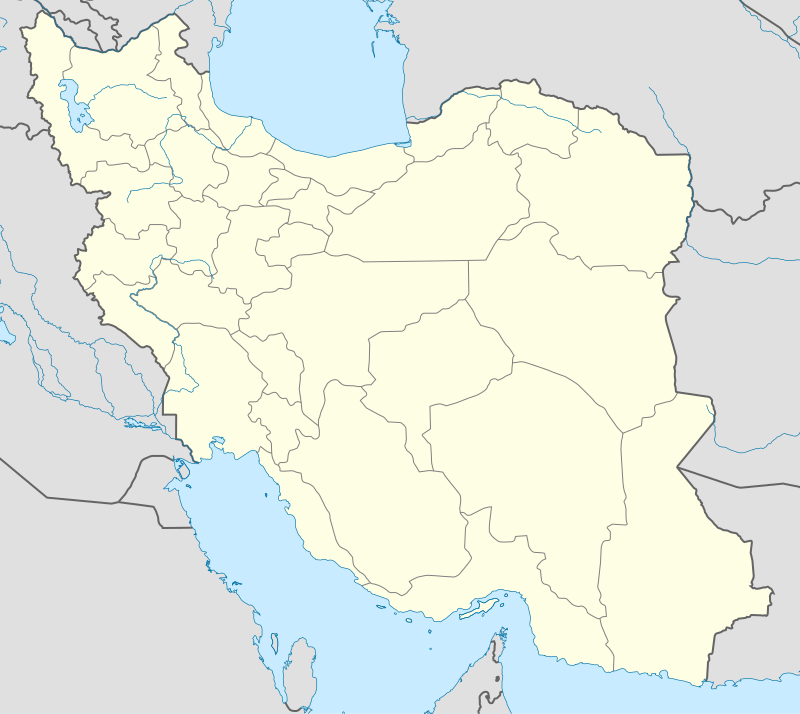 Sarpol-e Zahab | |
| Coordinates: 34°27′40″N 45°51′46″E | |
| Country | |
| Province | Kermanshah |
| County | Sarpol-e Zahab |
| Bakhsh | Central |
| Population (2016 Census) | |
| • Total | 45,481 [1] |
| Time zone | UTC+3:30 (IRST) |
| • Summer (DST) | UTC+4:30 (IRDT) |
Description
The spoken language in the city is Kurdish, but the language which is used in schools and offices is Persian, since the official language in Iran is Persian. Almost everyone in the city is fluent in Persian.
There are several rock reliefs from the Lullubian period in Sarpol-e Zahab. The town is also identified as the site of the ancient and medieval town of Hulwan.
The population of Sarpol-e Zahab comprises Kurds who speak the Kalhori, Gorani and Sorani (Jaf) dialects of Kurdish. The inhabitants are respectively adherents of Islam (both Shia and Sunni) and Yarsanism.
2017 earthquake
.jpg)
Sarpol-e Zahab was one of the two major towns most seriously affected by the 2017 Iran–Iraq earthquake.
Reliefs
The area of Sar-e Pol-e Zahab has several more or less well preserved reliefs of the Lullubi kingdom, as well as a Parthian relief.
Lullubian reliefs
The most famous of these reliefs is the Anubanini rock relief. Another relief named Sar-e Pol-e Zohab I is about 200 meters away, in a style similar to the Anubanini relief, but this time with a beardless ruler.[4] The attribution to a specific ruler remains uncertain.[4] There are also other Lullubian relief in the same area of Sar-e Pol-e Zahab.[5]
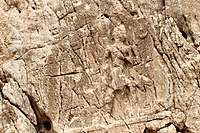 Sar-e Pol-e Zahab, relief I[4]
Sar-e Pol-e Zahab, relief I[4]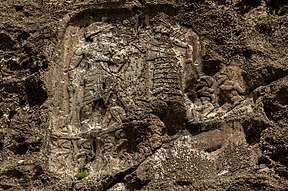 Sar-e Pol-e Zahab, relief II: Anubanini rock relief[4]
Sar-e Pol-e Zahab, relief II: Anubanini rock relief[4]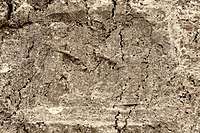 Sar-e Pol-e Zahab, relief III[4]
Sar-e Pol-e Zahab, relief III[4]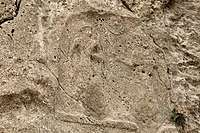 Sar-e Pol-e Zahab, relief IV[4]
Sar-e Pol-e Zahab, relief IV[4]
Parthian relief
Another relief is located below the Anubanini relief, lower on the cliff. This relief was created during the Parthian Empire in the name of Gotarzes, possibly Gotarzes I, but more probably the Parthian king Gotarzes II, who ruled from 39 to 51 CE and is known to have made other reliefs, such as the equestrian relief at Behistun.[6][7]
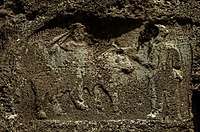 The second relief, below the Anubanini relief, a Parthian relief.
The second relief, below the Anubanini relief, a Parthian relief.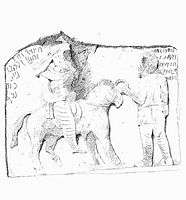 Drawing of the Parthian relief.
Drawing of the Parthian relief.
References
- "Statistical Center of Iran > Home". www.amar.org.ir.
- Sarpol-e Zahab can be found at GEOnet Names Server, at this link, by opening the Advanced Search box, entering "-3078472" in the "Unique Feature Id" form, and clicking on "Search Database".
- "Census of the Islamic Republic of Iran, 1385 (2006)". Islamic Republic of Iran. Archived from the original (Excel) on 2011-11-11.
- Osborne, James F. (2014). Approaching Monumentality in Archaeology. SUNY Press. pp. 123–124. ISBN 9781438453255.
- Vanden Berghe, Louis. Relief Sculptures de Iran Ancien. pp. 19-21.
- Vanden Berghe, Louis. Relief Sculptures de Iran Ancien. p. 45.
- Deuren, Greet van (2017). Iran (in Dutch). Gottmer Uitgevers Groep b.v. ISBN 9789025763961.
